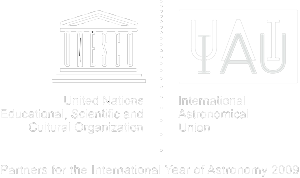Context: The world is abuzz with talk of Brazil's economic problems at the moment, with the country's habitual failure to meet even growth expectations and now protests in the streets becoming a common sight. But, as Brazilian rap artist MV Bill succinctly stated, “We can have economic growth and keep inflation down, but without growth in education we will slow down the country's growth”.
In 2011, only 17 % of Brazilians aged 18-24 were enrolled in a university or had already obtained a diploma, according to a study by the Education Ministry. Furthermore, the average Brazilian has completed an average of just 7.3 years of schooling, according to census data, and nearly 13 million people, or 8.6 %t of the population, are illiterate.
"Without qualified professionals coming out of our universities in the numbers we need in the next 10 or so years, Brazil is running a great risk of losing its new position as the world's sixth economy and with it the pretensions of playing a bigger role on the world stage," said Antonio Frets, a veteran member of the Brazilian Academy of Education. "If there's not a real and meaningful education reform, Brazil could be left in the dust."
To help change these bleak statistics a UNAWE Student Ambassador have been working hard to organise regular astronomical activities with local primary school children, to inspire in them a curiosity about our awesome Universe, and a lasting thirst for scientific knowledge.
Title: Céus Escuros para um Futuro Brilhante (Dark Skies for a Bright Future)
Location: Viriato Correia public school, Sao Bernardo do Campo, Sao Paulo, Brazil
Type of Event: Workshop
Event Dates: Total of 6 workshops (10 April, 15 April, 15 May, 27 May, 12 June, 24 June)
Number of students reached: 120 children
Budget: 0 EUR
Team: Lívia Aceto
Summary: UNAWE Student Ambassador Livia Aceto, from Brazil, organised six astronomy classes and workshops for children aged 6 to 8 years at a public primary in Sao Paulo metropolitan area, the economical core of Brazil. Over the six sessions a total of 120 children participated. The project went on to become a monthly activity until the end of August 2013.
Educational Objectives:
- Introduce the children to a selection of general astronomy concepts, including which night sky objects can be seen with the naked eye and the effects of the light pollution on observations.
- Present the different moons of the Solar System using the UNAWE “Deadly Moons” activity.
Strategy: The same group of children attended each of the six workshops. At the beginning of each session the children were organised into six separate groups, each activity was then held six times: once with each group. The activities are much more successful with smaller groups, it allows the teacher to identify what works best with each set of children and alter the agenda to suit their needs. Additionally, one-on-one interaction with the teacher gives the children the opportunity to ask any questions and offers an all-around more rewarding and educational experience.
April classes:
- Each session began with a question and answer discussion about night sky objects that can be seen with the naked eye and the effects of city light pollution on observations. Pictures were projected at a wide screen and I brought the children close to me sat cross-legged on the floor. The Q&A session is an excellent starting point as it allows you to gauge the children’s level of knowledge and the interactive helps them feel comfortable with a new teacher.
- The UNAWE “Distances in the Universe” poster was used to show the kids the scale of the Universe. It is the perfect way to introduce the children to new kinds of astronomical objects of which they have no prior knowledge, for example the Oort Cloud, nebulae and galaxies. An added bonus is that the fun illustrations on the poster are always a hit with children.
May classes:
- Two different rooms were used for the UNAWE “Deadly Moons” workshop; one for presenting the introductory slide show and the other for the drawing part of the activity. The slide show was presented in English and took between 15 and 25 minutes — for some groups more information was necessary, for others a “sped up” version worked better.
Successes: The activities held were all suitable for the age range in attendance, and each of the above learning goals were successfully achieved.
Challenges: The logarithmic scale of the “Distances in the Universe” poster is difficult for children between 6 and 8 years to comprehend. However, the distorted (giant) feet at the bottom of the poster show the children that the scale is unusual (non-linear).
Discovering how long to spend on the presentation section of the “Deadly Moons” activity was a challenge due to the range of different age groups at each workshop (between 6 and 8 years).
The oldest children were harder to engage, and seemed happier and more attentive when a shorter, condensed version of the presentation was given. With groups containing children of different ages it is difficult to find a the right pace. Even when working with the same children twice, their attention span can vary from day to day.
Improvements: The "Universe in a Box" would be an excellent addition to this workshop, especially with children of this age range. However, at the time of these activities the toolkit was not available in Brazil. Universe in a Box is now available all over the world.
DIY materials:
- Distances in the Universe: http://www.unawe.org/resources/education/UNAWE_Distances_in_the_Universe/
- Deadly Moons: http://unawe.org/resources/education/deadly_moons_guide_158/
- Universe in a Box: http://www.unawe.org/resources/universebox/















